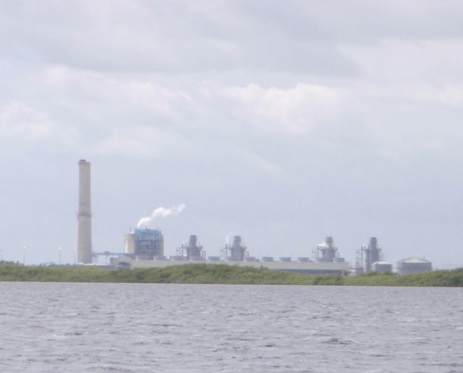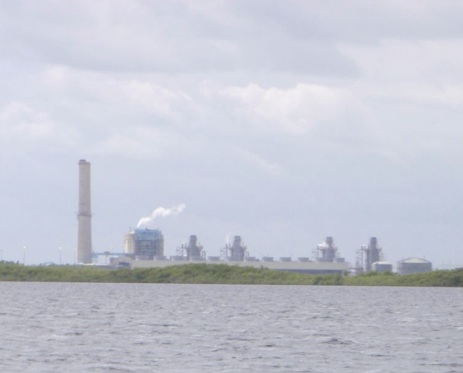 Turkey Point nuclear power plant in Miami-Dade county, Florida.Photo: ShelahDThe U.S. Nuclear Regulatory Commission is refusing to update its worst case scenario models for the flooding of coastal U.S. nuclear power plants. Potentially, this puts the backup safety systems at reactors like the Turkey Point plant in Miami-Dade county, Florida, at risk of damage or destruction by hurricanes.
Turkey Point nuclear power plant in Miami-Dade county, Florida.Photo: ShelahDThe U.S. Nuclear Regulatory Commission is refusing to update its worst case scenario models for the flooding of coastal U.S. nuclear power plants. Potentially, this puts the backup safety systems at reactors like the Turkey Point plant in Miami-Dade county, Florida, at risk of damage or destruction by hurricanes.
That’s the bombshell buried in a piece by Alyson Kenward of Climate Central:
The extent of sea level rise that [utility company Florida Power and Light] has incorporated into their estimates of the maximum possible storm surge has already become a point of contention in the safety assessment for the new Turkey Point reactors. The Miami-Dade County Climate Change Advisory Task Force (CCATF) has called for the NRC to request that a much higher level of sea level rise be included in the assessment.
Currently, nuclear regulators are blase about the threat of inundation at America’s nine coastal nuclear power plants, because all of them are built far enough above sea level that rising seas won’t reach them within their expected operating life. However, storm surges on top of rising seas could — and in at least one case, have already.
Here’s Kenward’s account of the U.S. Fukushima accident that almost but never was, which happened in the wake of Hurricane Andrew in 1992:
Potentially the most hazardous incident was a loss of access to external power for five days. Engineers at Turkey Point were forced to rely on the on-site diesel generators to maintain cooling of the reactors’ cores. Fortunately, this back-up system was enough to keep everything operating safely. In Japan, however, an equivalent back-up system was wiped out by the tsunami.
But that’s OK, says the U.S. Nuclear Regulatory Commission, because their model of the worst case scenario at Turkey Point puts the plant’s safety systems a healthy 1.2 feet above the highest-possible storm-whipped surge. Except those calculations don’t include an accurate model of future sea level rise, and some of these plants are projected to have a 100 year operating life, from first construction to decommissioning!
Nothing to see here, carry on.
Read more:
“Sea Level Rise Brings Added Risks to Coastal Nuclear Plants,” Climate Central



